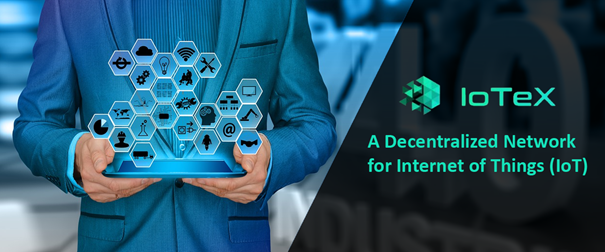The Internet of Things (IoT) is a network of small devices that are connected to the internet capable of relaying specialized data around the world. Some examples of IoT devices are products like Nest that allow people to remotely manage their thermostat, and Ring that allows a person to watch what’s taking place on their security cameras while away. The concept of connecting sensors to the internet and tracking data has been around since the 1980’s and 90’s, but the technology wasn’t able to catch up until about a decade ago.
Now let’s go a few years back to 2017, when every conceivable use case was coupled with a blockchain, the idea of IoT using distributed ledger technology coupled with a token made sense in the minds of many investors wanting the ride the ICO crypto wave. Some notable projects still around today are IOTA, IoTeX, and a promising newcomer by the name of Helium.
One of the largest (by market capitalization) and most recognizable IoT token projects is IOTA (MIOTA). According to the CoinMarketCap website, IOTA is a distributed ledger for the Internet of Things that uses a directed acyclic graph (DAG) instead of a conventional blockchain. Its quantum-proof protocol, Tangle, reportedly brings benefits like ‘zero fees, infinite scalability, fast transactions, and secure data transfer’. Next is IoTeX that has a slightly different approach as mentioned by the team’s Medium post, which seeks to create what it calls the “Internet of Trusted Things.” The Internet of Trusted Things will allow all physical and virtual “things” — humans, machines, businesses, and dApps — to efficiently exchange information amongst each other. Under this framework, people can seamlessly transact with machines in a new sharing economy and data-as-a-service use cases; machines can interact directly with other machines to power decentralized autonomous organizations (DAO); businesses can collaborate with other businesses to achieve new levels of collective intelligence and impact; and humans, machines, and businesses can access trusted decentralized applications (dApps) to perform various processes/tasks with full data privacy.

According to the project website, Helium (HLM) is a digital currency and blockchain network that focuses on improving supply chain logistics in the construction and infrastructure sector. Recently, a partnership was struck with semiconductor manufacturer SemTech to integrate low-range IoT devices with Helium’s decentralized wide-area network that will unlock a multitude of new possibilities beyond construction and infrastructure. This partnership adds to others with the likes of Nestle, ReadyFresh, and Lime Scooters. Helium began in 2013, but entered the crypto arena last year with when it launched an open source, blockchain-based peer-to-peer wireless network that allows users to run hot spots all over cities and earn crypto/HLM.
In closing, as the world of IoT continues to expand with more sophisticated devices, decentralization will offer social and community benefits by allowing individuals and small businesses an opportunity to participate in the greater economy through tokenization and a stake in these growing networks, which I hope will bring greater transparency, more robust data integrity and greater economic opportunity for the masses.
This article by Kamal Hubbard was originally posted at www.kamalrhubbard.com.
